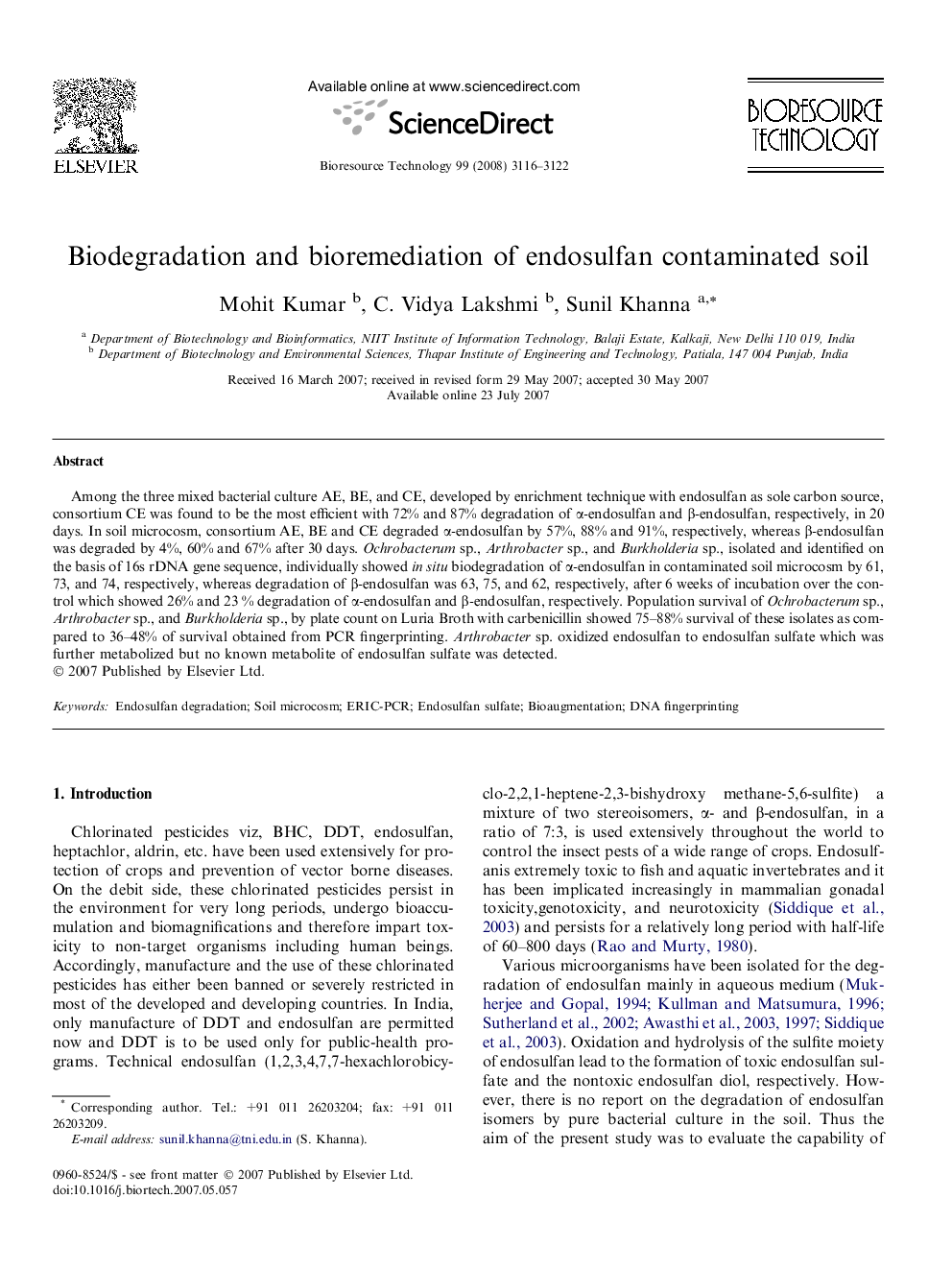| کد مقاله | کد نشریه | سال انتشار | مقاله انگلیسی | نسخه تمام متن |
|---|---|---|---|---|
| 685776 | 889049 | 2008 | 7 صفحه PDF | دانلود رایگان |

Among the three mixed bacterial culture AE, BE, and CE, developed by enrichment technique with endosulfan as sole carbon source, consortium CE was found to be the most efficient with 72% and 87% degradation of α-endosulfan and β-endosulfan, respectively, in 20 days. In soil microcosm, consortium AE, BE and CE degraded α-endosulfan by 57%, 88% and 91%, respectively, whereas β-endosulfan was degraded by 4%, 60% and 67% after 30 days. Ochrobacterum sp., Arthrobacter sp., and Burkholderia sp., isolated and identified on the basis of 16s rDNA gene sequence, individually showed in situ biodegradation of α-endosulfan in contaminated soil microcosm by 61, 73, and 74, respectively, whereas degradation of β-endosulfan was 63, 75, and 62, respectively, after 6 weeks of incubation over the control which showed 26% and 23 % degradation of α-endosulfan and β-endosulfan, respectively. Population survival of Ochrobacterum sp., Arthrobacter sp., and Burkholderia sp., by plate count on Luria Broth with carbenicillin showed 75–88% survival of these isolates as compared to 36–48% of survival obtained from PCR fingerprinting. Arthrobacter sp. oxidized endosulfan to endosulfan sulfate which was further metabolized but no known metabolite of endosulfan sulfate was detected.
Journal: Bioresource Technology - Volume 99, Issue 8, May 2008, Pages 3116–3122